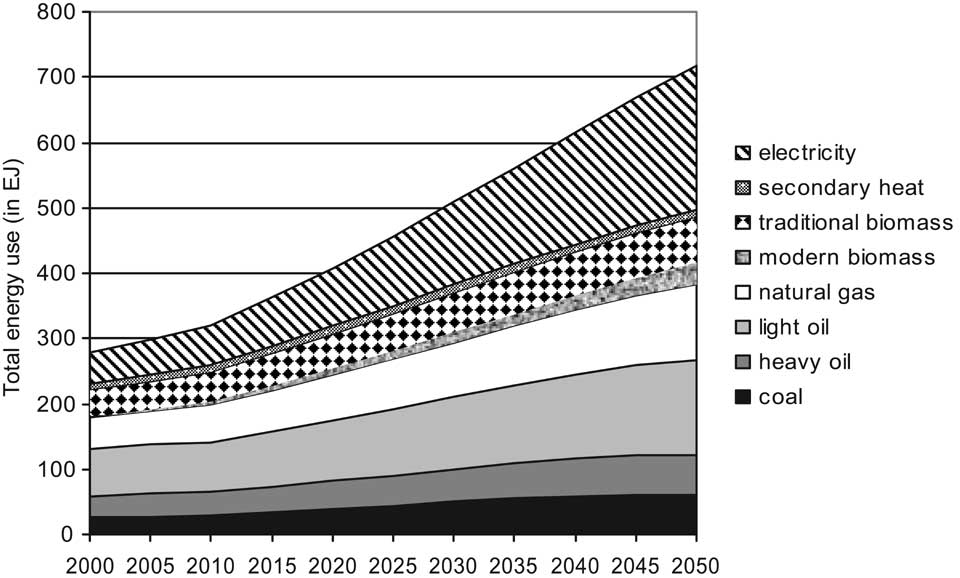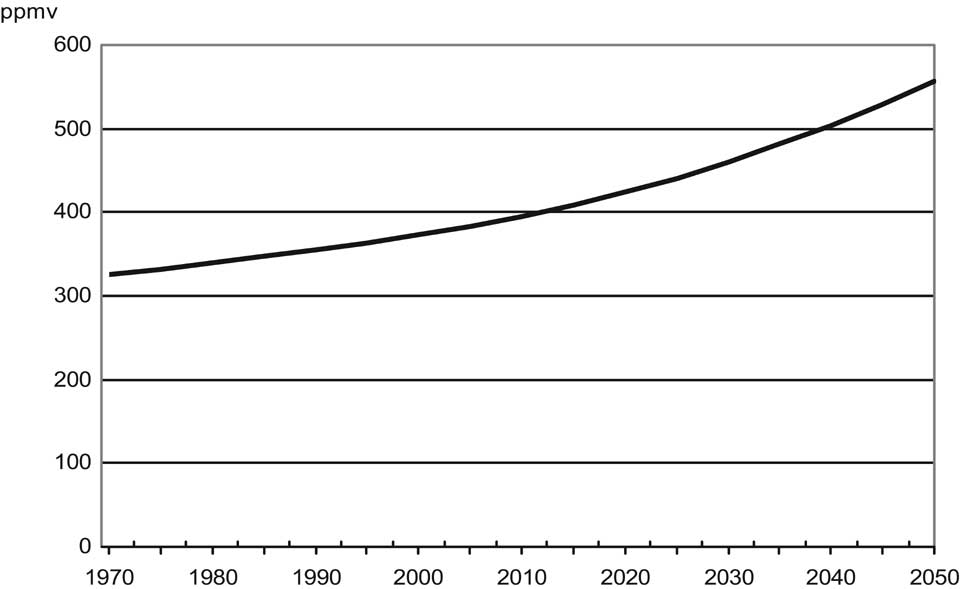
Figure 5-11. Total energy use, reference run. Source: IMAGE model.
levels will provide incentives to invest in alternative energy sources such as bioenergy.
5.3.3.4 Climate Under the IAASTD reference run, the atmospheric concentration of greenhouse gas rises driven mainly by increasing emission of greenhouse gases from the energy sector (see Figure 5-12 for CO2). The concentration of greenhouse gases reflects the balance of net fluxes between terrestrial areas, oceans and the atmosphere. By 2030 the CO2 concentration reaches 460 ppmv, and increases further to 560 ppmv in 2050, a doubling of the preindustrial level. This trend is not stabilizing in 2050, so higher concentrations will occur on the longer term.
The effect of more greenhouse gases is a rise in global mean temperature above the preindustrial level to 1.2°C in 2030 and 1.7°C in 2050 (Figure 5-13). These values are well in line with IPCC, where best estimate values at the end of the twenty-first century range between 1.8 and 4.0°C. This range is even larger when the uncertainties in the climate sensitivity are taken into account as well. Including this range of uncertainty, the IPCC gives a temperature range between 1.1 and 6.4°C by the end of the twenty-first century. Taking uncertainties in climate sensitivity into account in the reference run, global-mean temperature increase will be around 1.0 and 2.5°C in 2050.
The calculations show that in the first few decades of the twenty-first century, the rate of temperature change is somewhat slightly slowed down compared to the current rate, in response to lower emissions, e.g., due to a slowdown in deforestation, stable methane concentration in recent decades and increasing sulfur emissions, mainly in Asia, with a cooling effect. In the following decades these trends are discontinued, driving the temperature change rate upwards again. Factors that contribute to this increase are increasing greenhouse gas concentration in combination with reduced sulfur emissions. By 2030 the temperature increases by a rate of more than 0.2°C per decade, augmenting the climatic impacts and increasing the need for adaptation (Leemans and Eickhout, 2004), especially in nature and agriculture.
Changes in global mean temperature cannot reflect the regional effects that climate change may have on crop yield, water resources and other environmental services for hu-
man development. Therefore, the regional aspects of climate change need to be addressed as well, although the extent of the regional effect is still very uncertain. Although the global mean temperature change is around 1.4°C between 1990 and 2050 (see Figure 5-13), regionally this can imply changes of more than 2.5-3°C (Figure 5-14). The IPCC concluded that many of the developing countries are most vulnerable to climate change, mainly because of their dependency on sectors, which are relying on climatic circumstances, and their low ability to adapt (IPCC, 2007). For example, agricultural production, including access to food, is projected to be severely compromised by climate variability and change in many African countries and regions (IPCC, 2007). The area suitable for agriculture, the length of growing seasons and yield potential, particularly along the margins of semiarid and arid areas, are expected to decrease.
The impact on crop growth is one of the most important direct impacts of climate change on the agricultural sector. Through CO2 fertilization, the impact can be positive, although this effect is not larger than 20% (IPCC, 2007). However, at higher temperature increases the impacts on crop yields will be dominated by negative impacts (IPCC, 2007). In total, the impact in 2050 is still relatively small, apart from some crucial regions like South Asia (Figure 5-15). Results can become even more negative when changes in climate variability are included as well, which is not included in this analysis. These conclusions are in line with IPCC, where it was concluded that, globally, the potential for food production is projected to increase with increases in local average temperature over a range of 1-3°C, but above this it is projected to decrease (IPCC, 2007). Moreover, increases in the frequency of droughts and floods due to changes in climate variability are projected to affect local production negatively, especially in subsistence sectors at low latitudes (IPCC, 2007).
5.3.3.5 Environmental consequences—land use change
The impacts of changes in agriculture and demand for bio-fuels lead to changes in land use. Although expansion in pastureland is compensated by an increase in grazing intensity, and increase in crop land is partially compensated by technological improvements (see 5.3.3), total land use for

Figure 5-12. Atmospheric CO2 concentration out to 2050, reference world. Source: IMAGE model.